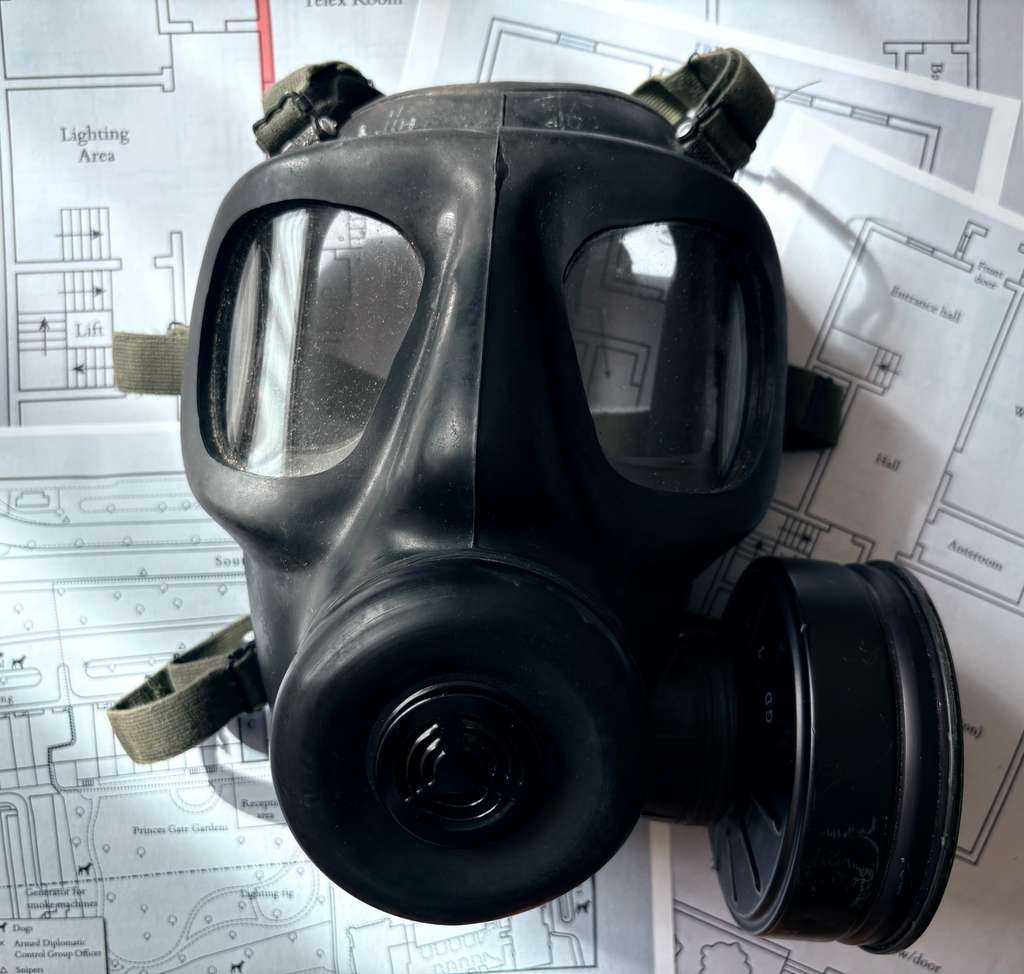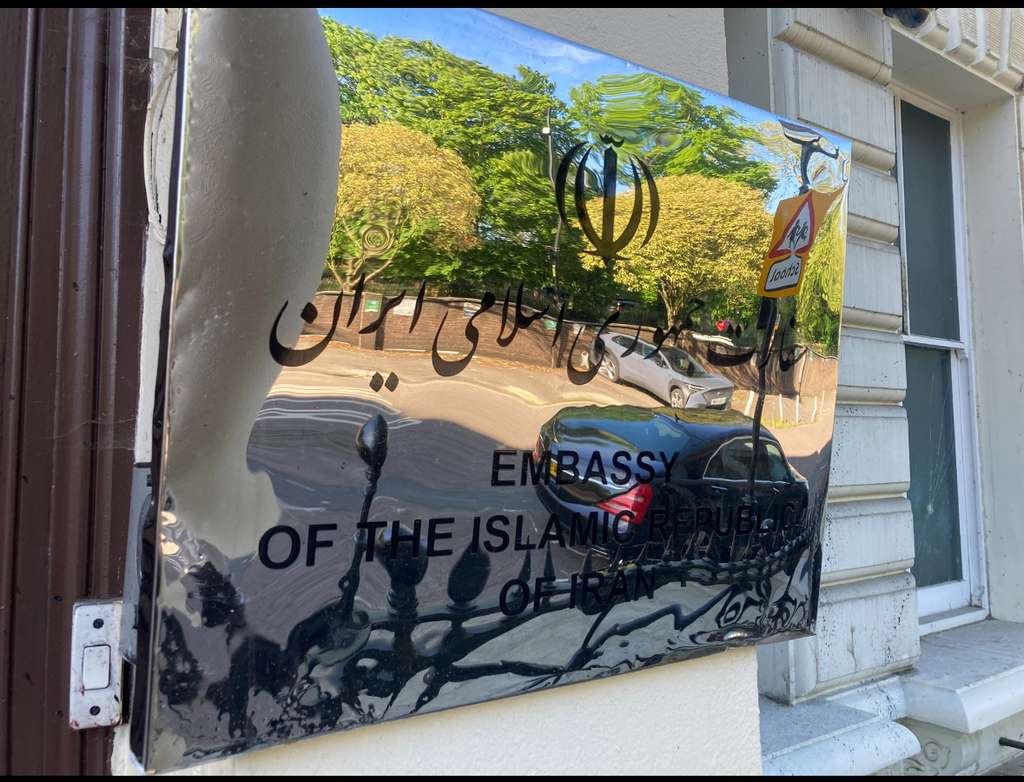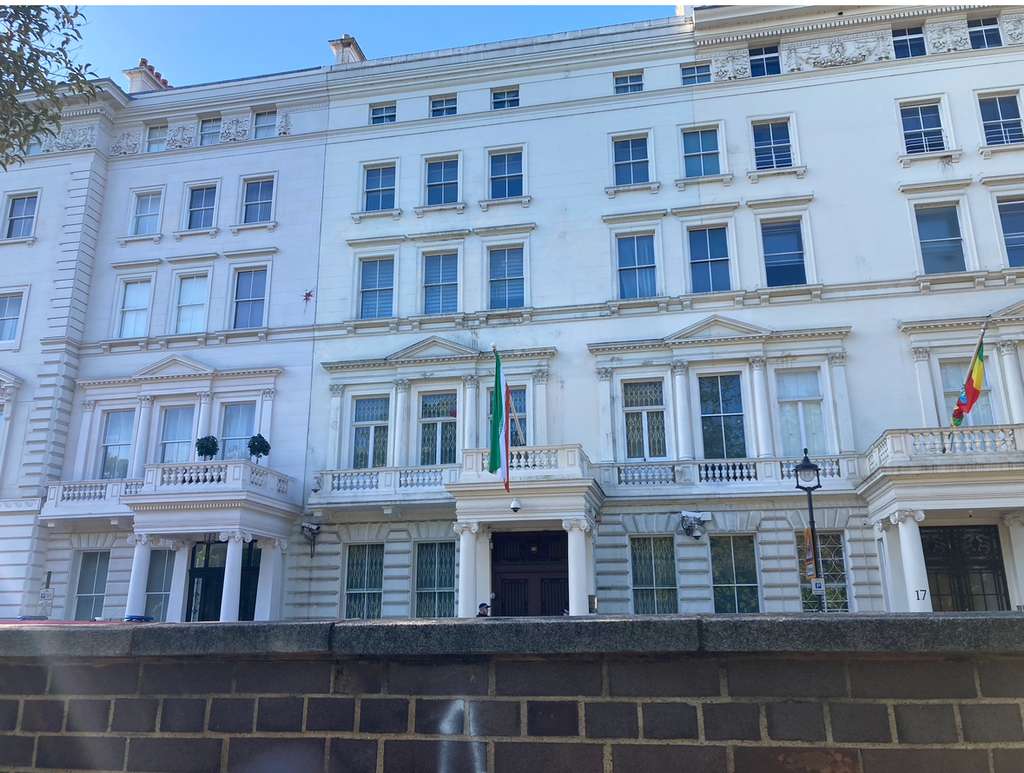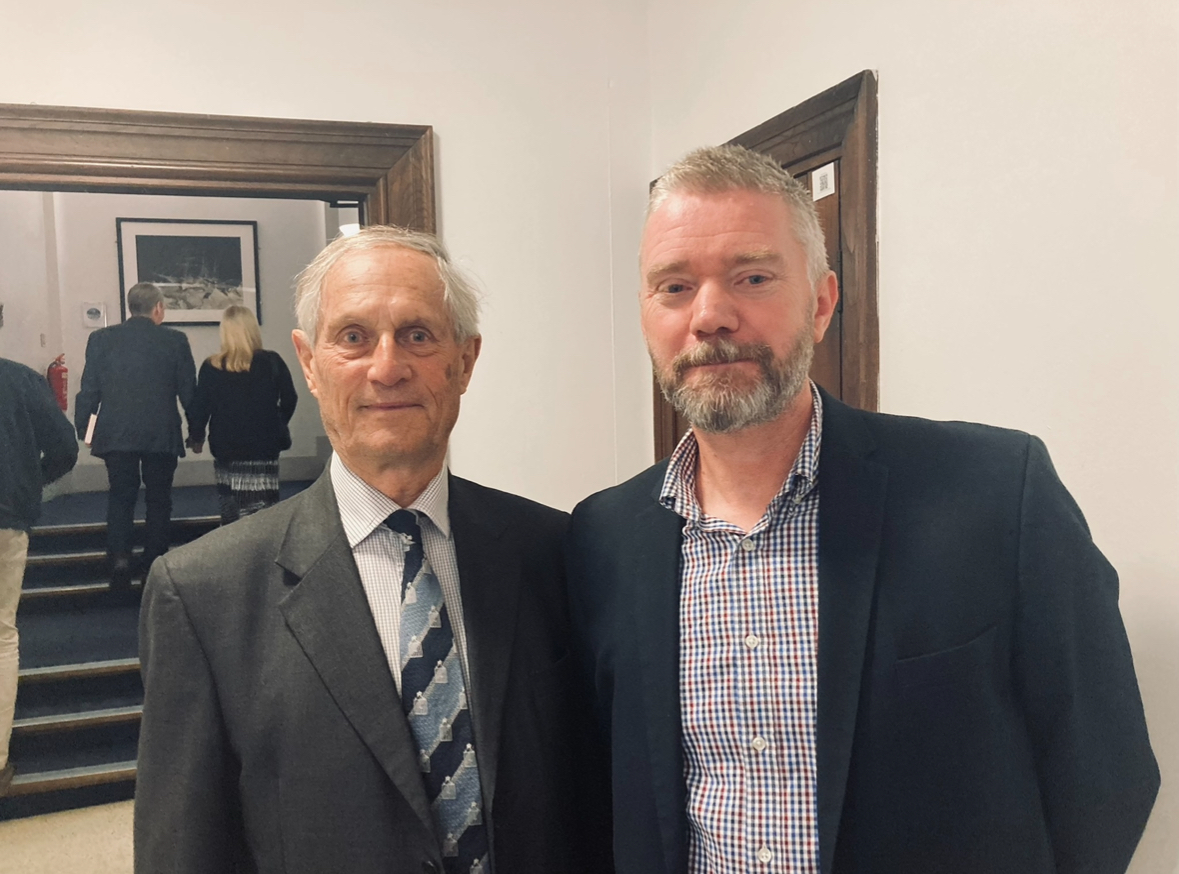Revisiting Operation Nimrod 45 years later
Robert McAlister writes about the Iranian Embassy siege in Kensington, London, titled Operation Nimrod, where he explores how the SAS overcame early obstacles to successfully rescue 26 hostages in just 17 minutes.

The S6 type respirator used in the raid by SAS teams | Photo: Robert McAlister
Forty-five years ago this week, the Special Air Service (SAS) infiltrated the embassy to free 26 hostages, who had been abducted several days before on April 30.

The Iranian Embassy in Kensington, London, UK | Photo: Robert McAlister
The SAS arrived and established a base next to the embassy, remaining on high alert for any sign that a hostage had been harmed – this would serve as the trigger for action, as authorised by then Prime Minister Margaret Thatcher. The operatives were instructed to intervene if negotiations between the terrorists and police failed. On the sixth day, a hostage was killed and his body thrown from the Iranian Embassy, prompting the SAS to mobilise.
On the sixth day of the siege, a hostage was killed and thrown outside the main doorsteps. This prompted the launch of the rescue operation, which began with SAS operatives entering through the front balcony following a powerful explosion. From start to finish, the operation took just 17 minutes. The embassy consisted of six floors containing 56 rooms, many of which had been boobytrapped by the terrorists. Although they were relatively unknown before, the SAS’s handling of the operation thrust them into the public eye, where they have remained ever since.
Interestingly, smoke generators intended to obscure the rescue were intentionally not deployed owing to the direct instructions from the prime minister, who wanted the international media to witness how the UK handled terrorism.
The SAS assault used explosive methods of entry (MOE) and flash bangs (grenades intended to disorientate), which destroyed parts of the building. Much of the building continued to burn as the final hostages were evacuated into the rear garden area, where they were secured and processed. Signs of Stockholm syndrome were observed in several hostages, particularly among the women, and this played a role in the survival of one of the terrorists, who served 27 years in prison.
Ready for peril
The SAS had trained for years for such an event, sharpening their contextual knowledge and tactics, even during the operation. This training included countless hours at their Hereford base, particularly in the 'Killing House', developing the close-quarters skills required for their evolving counterrevolutionary warfare (CRW) role. They proved that thorough planning and preparation are essential when approaching any critical task.
Part of the overall success of the operation was the ability to think and act beyond the plan, adapting and remaining flexible, enabled by hours of continuous high-level training and exercising, alongside strong team dynamics.
Can you imagine the complexity and communication challenges once the initial explosions began, the assault teams entered the building, and organised chaos took over?
Prior to the operation, the SAS had to consider a rudimentary immediate plan of action to break into the entry points on the ground floor of the stronghold using hammers and crowbars. This would have been hampered, or in the worst case, failed due to lack of knowledge about the building’s armoured glass, a detail which was later uncovered through conversations with the embassy caretaker. Such moments highlighted that good situational awareness and analysis are essential to success.
After the revelation, they began to develop a comprehensive intelligence picture as part of the attack response. They reconstructed the embassy's layout on a real scale at Regents Park Barracks, a few miles away, to rehearse their plan daily and minimise mistakes.
While the intervention was a success, some things did not go as planned. In one instance, an SAS trooper broke a window with his foot and alerted the terrorists while abseiling down the rear of the embassy. Another got tangled in his abseil rope and was badly burnt.

The Iranian Embassy in Kensington, London, UK | Photo: Robert McAlister
We must not forget the collaborative effort and effective partnerships between various teams and individuals behind the mission’s success. Alongside the SAS, there were teams from the Metropolitan Police specialist units, negotiators, and other blue light services.
One in particular that stands out is PC Trevor Lock, who was the uniformed diplomatic protection officer on duty at the embassy when the siege began. He was taken hostage but played a crucial part in assisting negotiations during the six days of siege. He helped subdue the armed terrorist leader as the main operation began by tackling him to the ground. Trevor sadly died aged 85 only last week.
They who dared
Sadly, 45 years on, there are far fewer members of B Squadron SAS who undertook the famous operation alive today, and those that are remain fairly silent about their activities on that day.

General Sir Michael Rose, previously Lieutenant Colonel, CO 22 SAS for Operational Nimrod, with Robert McAlister
I feel incredibly privileged to have met and spoken with some of these amazing but very ordinary individuals, including Lieutenant Colonel Michael Rose, who commanded the operation, and others at the Siege event in London last year, highlighting the operation and its backstory to coincide with Ben Macintyre’s book of the same name.